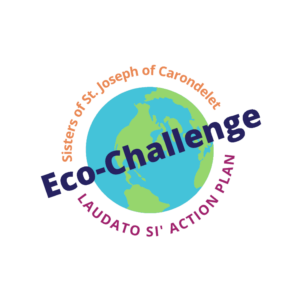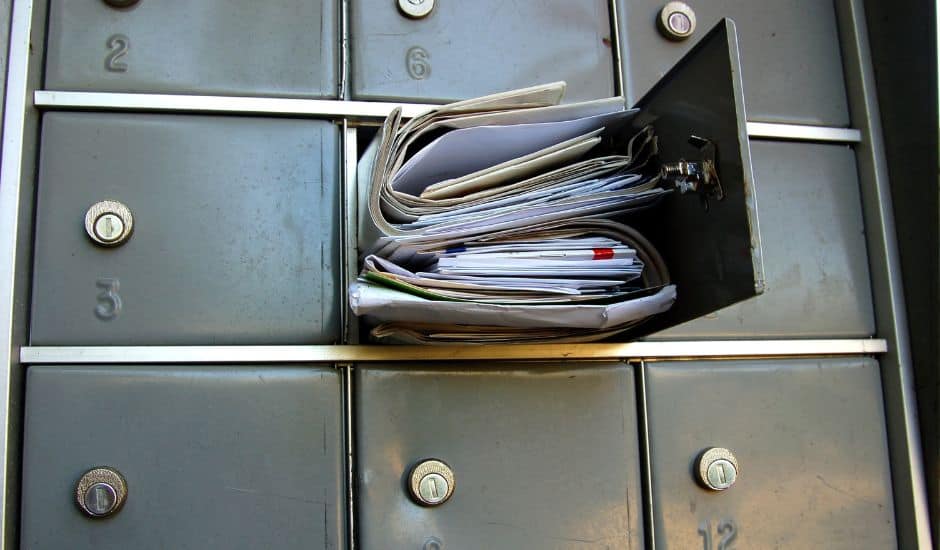
As part of our commitment to Earth via our Laudato Si’ Action Plan, we are inviting everyone who shares in our charism to take a monthly Eco-Challenge with us.
The carbon footprint of email
Have you ever thought about the carbon footprint of emails? The Carbon Literacy Project reports that 306 billion emails were sent in 2021, and that number is expected to top 376 billion in 2025. The impact of any single email varies depending on the efficiency of the device used to create and to read it and how long it took for the sender to write it and the reader to read it. All those emails add up!
The Carbon Literacy Project admits: “In the grand scheme of things, the impact of email is not the biggest carbon problem humanity faces, but it is an easy one to tackle.” Here are the tips they suggest to keep email volumes low and to tackle the stress and anxiety that come from email overload:
- Only subscribe to news services that you want.
- Unsubscribe from mailing lists that are no longer relevant to you.
- Ensure the mailing lists you use are up to date.
- Write concisely and keep messages as brief as possible.
- Only message those who need the information; don’t copy people in simply to cover your own back.

How to stop junk email
Junk email is a headache for many who are frequent users of the internet. According to a 2019 study by Talos, nearly 85% of all emails are spam. Reading and deleting unsolicited offers can seriously eat away at your time, but the emails can also do damage if they contain a phishing attempt, spyware or a virus.
How to unsubscribe in different email programs
Gmail
Outlook/Hotmail
Stopping snail mail
Remember the days when a trip to the mailbox was often filled with important and interesting messages, such as handwritten letters and a party invitations? Now, more times than not the mailbox delivers little more than credit cards offers, coupons, advertisements for hearing aids, unwanted catalogs, requests for donations and promotional flyers. In other words, junk mail!
Junk mail is a problem for our Earth and here’s why. According to the Waste Away Group, the amount of junk mail delivered each year in the United States is estimated to be 100 billion pieces. To break that down further, that averages to about 41 pounds of junk mail a year per adult. About 42% of this junk mail goes straight into landfills unopened. To produce this much paper requires somewhere between 80 million to 100 million trees annually. The factories that create and ship out junk mail are responsible for carbon emissions equivalent to about 9 million vehicles.
Eliminating your junk mail is a way to lessen waste and decrease your ecological footprint. Treehugger outlines some easy ways to stop all the junk mail coming to your home and office.
Take the Eco-Challenge
How many of these actions will you take this month?
Spread the word
- Leave a comment about how you’re taking the challenge below.
- Invite others to take the December Eco-Challenge by sharing our post on Facebook and/or Instagram.
Thank you for the eco-challenge to unsubscribe from unwanted email lists. It was just the nudge I needed to take action. I unsubscribed from 8!
Feeling better already.
Jennifer
This area I can say that I do well. I do not get junk mail, and if a piece does come, I call and have my name removed from their list.
The emails that I get are from people and organizations that I know. I have unsubscribed to some.
This is another good eco challenge.
I really appreciated this eco- challenge! I usually request a “mailing list removal” when the postage is pre-paid, but have been feeling guilty about the ones that don’t pay, so I recycle their stuff! I went on 5 websites to request removal of my name. Some groups don’t make it easy! But it’s worth the effort. I have made a list of those I have contacted so I can see how long it takes them to respond!
Thanks!
Lin Neil,CSJ